Words Amicia de Moubray Photographs Paul Wilkinson, Amicia de Moubray
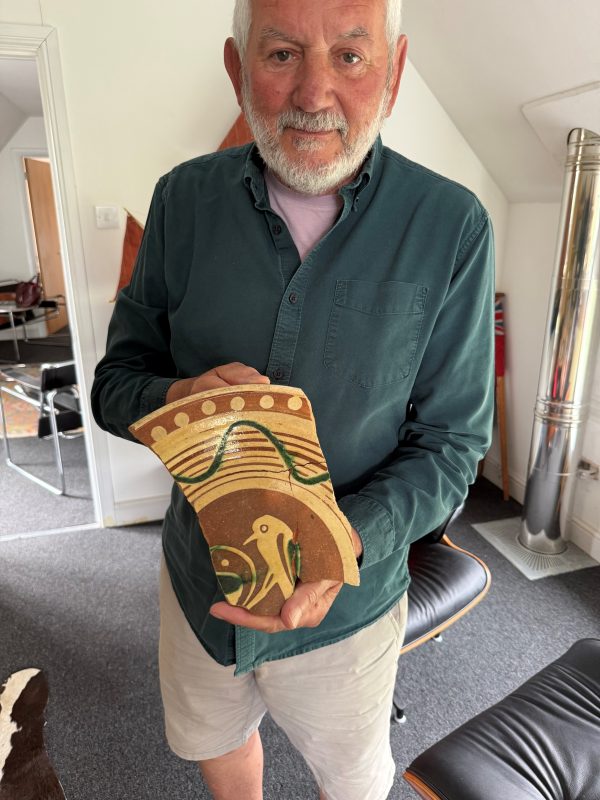
Dr Paul Wilkinson holds a shard of a medieval pot from archaeological excavations in Abbey Street, Faversham
‘Archaeology has suddenly exploded in the last few months because of the government’s drive to build more homes,’ says Dr Paul Wilkinson of SWAT (Swale and Thames Survey) Archaeology. ‘We are excavating 27 sites at the moment but have worked on 70-80 jobs so far this year.’ Who knows what lies beneath our feet waiting to be discovered?
Spending an hour or two with Paul in his office just outside Faversham is a riveting experience, learning about the wealth of evidence of Roman life in and around Faversham and further afield in Kent, and marvelling at the plethora of finds in his store. His life story is just as gripping. More on that later.
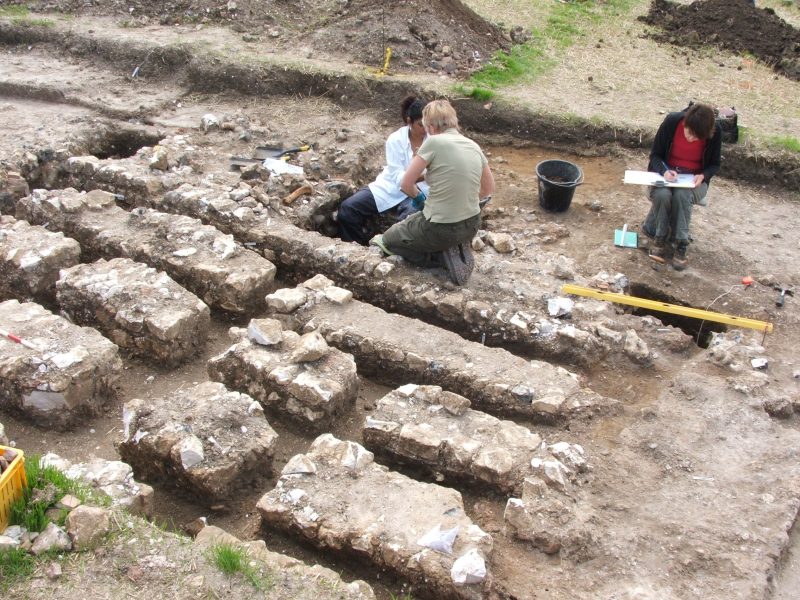
An archaeological dig
Every proposed development has to have an archaeological survey before planning permission is granted. Developers usually commission a geological survey before buying the land to ascertain if it has noteworthy remains.
About 20 years ago, Paul was asked by Swale Borough Council to work for them. They told him they were sick and tired of developers stopping work because of archaeology. He set up SWAT, and his Swale survey was paid for 50/50 by Swale Council and Shepherd Neame.
The Conservation Officer at the time suggested that Paul start a Field School. Ever since, Paul and his team (currently about 30 people strong) have been unearthing site after site. The team are all self-employed and are aged between 20 and 35. ‘Everything we find is recorded, written up and goes into store if it is not preserved in situ,’ says Paul. A newsletter is sent out to about 4,000 people.
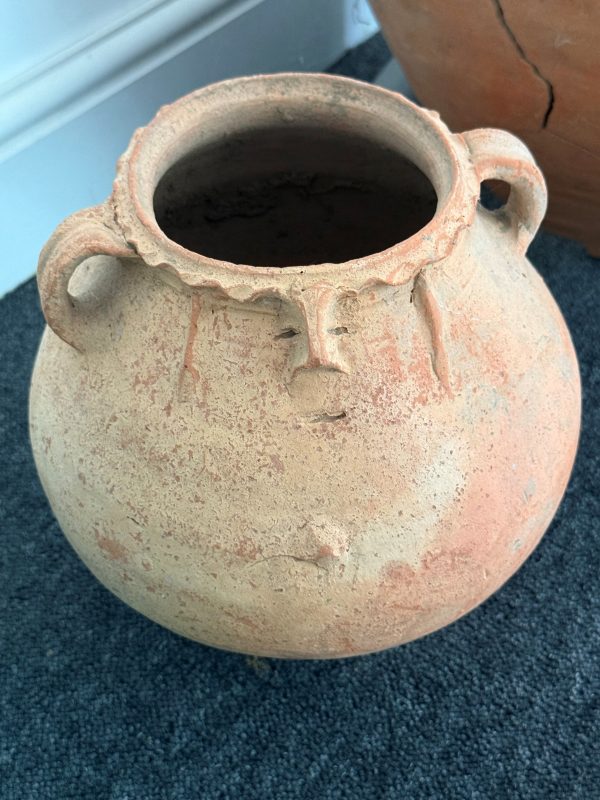
A Roman cremation ‘face pot’ from the archaeological dig at Syndale Roman cemetery
Roman cremation urns near Chilham, a V-shaped Roman fort at Syndale (subject of a Time Team YouTube video), a Roman villa at Deerton Street opposite the natural burial ground, an Iron Age coin from Willingdon near Ashford, and lots of pots from Abbey Street are just a few of the thousands of finds Paul tells me about. To me, the most exciting discovery is that of a Roman octagonal two or three storey bathhouse on the top of the hill on the right of the A2 just past Syndale. It used water sourced from the freshwater spring across the valley, arriving at the bathhouse via an aqueduct. Lo and behold, the Roman key was still in the lock, although the wood had long since rotted away. The key was last turned in the 4th century.
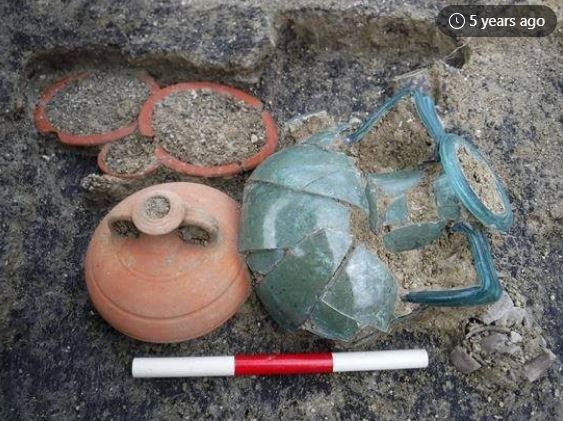
Roman cremations involved burning the body on a funeral pyre just outside the settlement (in this case Charing). Ashes and bones, after being washed in wine, were placed in a glass urn which was then interred with plates of food and drink, and a double handled pottery vessel for the final journey to the afterlife. These pots are dated 2nd century AD
Like many autodidacts, Paul, now 79 years old, has had a long and varied career. Originally, he studied graphic design at Canterbury School of Art before going to do a BA at the London College of Printing. Commercial work beckoned, with stints at the Sunday Times (which included a trip with Don McCullin on the Orient Express to Istanbul) and the Daily Mirror. Setting up as a freelance designer, one of his first jobs was to design the cover of the Beatles’ Sgt Pepper’s Lonely Hearts Club Band album. ‘The Beatles loved it.’ I was used for the CD cover, which was subsequently turned into a book. The initial print run of the book of one million sold out within minutes.
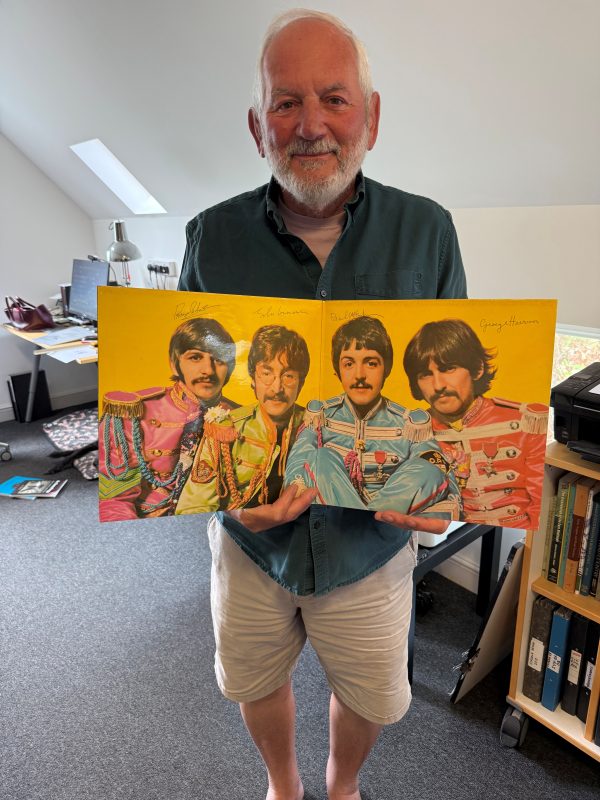
Dr Paul Wilkinson with the Beatles’ Sgt Pepper’s Lonely Hearts Club Band album which he designed
Next, Paul and his then wife opened a burger restaurant called Browns in Canterbury, in the basement below Greens, a 20-bedroomed hotel on Station Road, with a big neon sign at the back. ‘It was so popular that I had to employ two waiters just to deal with the queues.’
After selling the business, he took some time off before spending five years restoring a derelict schooner in Faversham. Malta was the next stop, where he had an offer from the Maltese government to take daily day trips out of harbour in the schooner. By then he had become a qualified scuba diver which led to him being asked by the University of St Andrews’ archaeological diving unit to investigate the Roman shipwrecks. ‘They said when I got fed up with that, I should come and teach at St Andrews.’
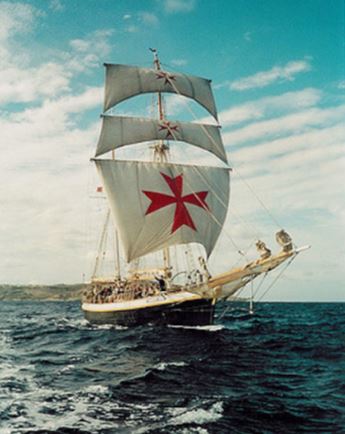
The schooner which took Paul five years to restore
After selling the boat, he went to St Andrews to study for a PhD: The Historical Development of the Port of Faversham. He has since written several books including the best seller Pompeii: An Archaeological Guide and Archaeology: What it is, Where it is and How to do it.
Another facet of his multifarious career was to lead tours along with local guides to a multitude of countries – Tunisia, France, Italy and Spain – exploring archaeological remains. ‘It was good fun working out the itineraries.’
What a fascinating life Paul has led.
Text: Amicia de Moubray. Photographs: Amicia de Moubray, Paul Wilkinson